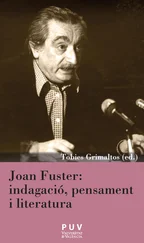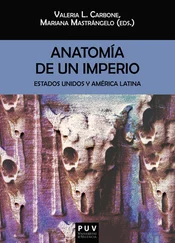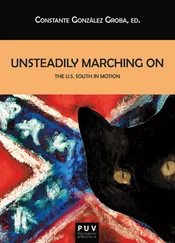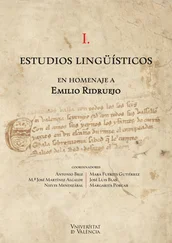The endeavor of studying antebellum literature in consideration of perspectives granted by critical regionalists, and transnational and hemispheric Americanists, has benefits beyond challenging monolithic considerations of the US American South. One such benefit is that favoring space and time proportionately in the analysis of texts – a requirement of all abovementioned theoretical discussions – allows a contextualization within much more comprehensive socio-political as well as literary geographies. This approach also helps reveal often disregarded assemblages and avoid anachronisms that neglect the fluidity of conditions and opinions. Besides, the archipelagic approach takes a step forward in overcoming our persistently and overwhelmingly continental geographical imaginations that, as DeLoughrey suggests, overlook the “system of archipelagraphy” and downgrade them to isolated spaces (23).
This article analyzes two literary presentations of the South by antebellum authors, whose conceptualizations of liberty place them on the opposite poles of the ideological spectrum in the antebellum US. It argues that these different understandings of liberty – defined in terms of emancipation and feminism in Livermore’s Zoë and a slaveholding anti-colonialism in Holcombe’s The Free Flag of Cuba – result in diverging visions for the futures of slavery and the South in the union, as well as conflicting imaginations of didactic relationships with the Caribbean. These spatial imaginations of the South challenge both the established borders and dominant spatial narratives of the nation and its regions, and the customary interpretations of geographical relations attributed to the social and political affiliations of the authors. These analyses demonstrate not only the coexistence of multiple pre-war projections concerning the South but also locate these different visions of the South within conflicting relationships with its Caribbean neighbors based on their understanding of liberty.
Accordingly, this article will first analyze the abolitionist spatial narrative of the South and Caribbean that Livermore’s Zoë constructs through the transformative power of an oceanic voyage. Later, The Free Flag of Cuba by Holcombe will be studied for its geographical imagination for southern and Caribbean futures within a slaveholding hemisphere.
***
Although details of Elizabeth Dorcas Livermore’s life are largely unknown, her family lineage, literary works, and presence in Unitarian publishing suggest that she was an adherent Unitarian transcendentalist, who studied the preeminent authors of the movement, including Emerson, Channing, and Fuller, thoroughly. However, her commitment to transcendentalism – a movement taxed with divisions of opinion itself – is one that questions and criticizes the well-known names; it produces its own unique understanding of some of the principles of this school. Alongside the two-volume novel Zoë; or the Quadroon’s Triumph: A Tale for the Times , Livermore published poetry in journals, her own literary magazine The Independent Highway , and a play titled The Fugitives , all of which carry undertones of this unique transcendentalism. Since 1962 when William Coyle included a short biography of Livermore in his catalog of Ohio authors, there has been some scholarly interest in her novel. May’s reference to her as a contributor to the female filibustering narratives in the antebellum era (“Reconsidering Antebellum”), Turner’s short analysis of Zoë as an anti-slavery story, Bost’s Mulattas and Mestizas contextualizing Zoë among other antebellum “tragic Mullata” narratives, and O’Brien’s chapter pursuing the novel’s connection to other transcendentalists in a large transatlantic network are some of the products of this recent interest.
Zoë; or the Quadroon’s Triumph is about the daughter of two former slaves from the Danish colony St. Croix, who is sent by her parents to Copenhagen to be educated. The first volume follows the protagonist through her sojourn in Europe as well her transatlantic journey, witnessing the prejudice that little Zoë receives from her teacher and her nourishing friendships with Hilda – the daughter of a slaveholder from St. Croix – and the welcoming people in Denmark. In the second volume – which will be the subject of study here – the narrative introduces various people that Zoë and Hilda meet on their way back home after eleven years in Copenhagen. This maritime voyage through England, the Bermuda Islands, the United States, and the West Indies, it will be argued, has a transformative impact on the passengers. It also allows the narrative to construct an ideal for a transcendentalist Christian Republic. The transformation of an individual character during this journey, namely George Stephenson – also referred to as Young America in the narrative – will be of particular interest for the current argument.
Readers familiar with Zoë may regard it a peculiar idea to search for alternative antebellum visions of the US South in it, since the expansive geography of the narrative touches the shores of the US only once and very briefly when the vessel carrying Zoë and Hilda back home stops at the port of Mobile, Alabama, to welcome new passengers aboard. Yet, with the inclusion of these new American passengers, all of whom symbolize the region they are coming from, the novel carries a miniscule America on board. Among the Pierson siblings and the Unitarian transcendentalist Mr. Lindsey from Boston, and Reverend Chichester of Missouri, the novel singles out George Stephenson as the only new passenger to be born outside of the US. However, against the novel’s transcendentalist abolitionism and feminism, the narrative designates Stephenson as a misogynist and racist, labelling him Young America after the homonymous movement that he supports, identifying him with the ideals of expansionist filibusterism. Indeed, the very reason Stephenson is on board with all the others is his plan to join a filibustering expedition in South America to see and possibly move to “a new settlement” (Livermore, Zoë II 107-8). In this sense, Stephenson becomes almost a symbol for the South as the region is imagined in the novel, while maintaining his contradiction to Reverend Chichester – another southern emblem in the narrative whose pro-slavery ideas remain intact throughout the novel.
The narrative defines superiority not by “[b]irth, rank, fortune, elegance, genius, intellect, beauty” (Livermore, Zoë II 198–99) but by principles and values, and constructs a philosophy of moral development. This philosophy centers on a notion of liberty designated in terms of individual self-actualization achieved via slave emancipation and female freedom. This article suggests that the narrative presents the Caribbean Sea as a space of transformation, where Young America can benefit from the guidance of his morally superior companions, according to this philosophy. The same setting also provides the novel with many necessary tools to enable such a transformation.
The first volume of the novel constructs an imagined space of freedom from racism in Europe – apart from her teacher’s intolerance towards Zoë. However, the second volume signals a shift in the protagonist’s life with the proximity to the US and the West Indies, where slavery still is either continuing or felt via the racist structures that were left after its recent abolitions. The Caribbean setting surrounds Zoë in an atmosphere that is heavily tainted by white supremacy and racial prejudice. The intellectual and moral enthusiasm that she has nourished in the freedom of Europe stands in stark contrast to the racist expectations of some of the white American passengers, including Young America, and eventually makes them question their racial biases. This setting provides the narrative with the opportunity for a dramatic display of Stephenson’s worthiness of the transcendentalist moral guidance by Mr. Lindsey, the abolitionist and feminist passenger from Boston. This opportunity arises with the employment of a common motif of Caribbean nautical fiction: shipwreck. While the passengers are sailing some miles away from Jamaica, the ship hits a reef. Everybody but a black waiter is saved. This gives Young America the chance for a heroic gesture: although he openly claims to “have a born antipathy to niggers” (Livermore, Zoë II 159), he still jumps into the water and rescues the waiter.
Читать дальше












